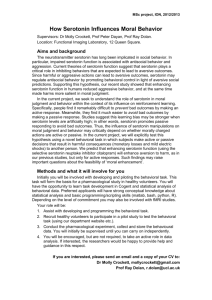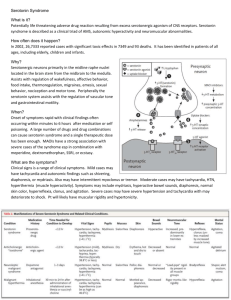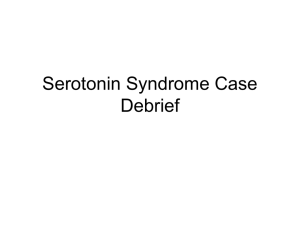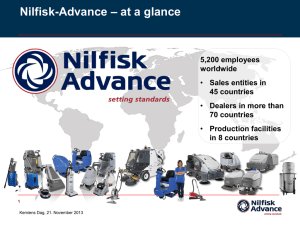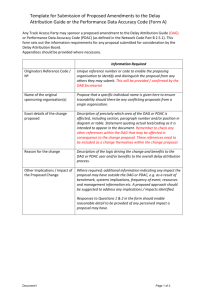Diacylglycerol for Obesity-Serotonin Hypothesis Hidekatsu Yanai1
advertisement
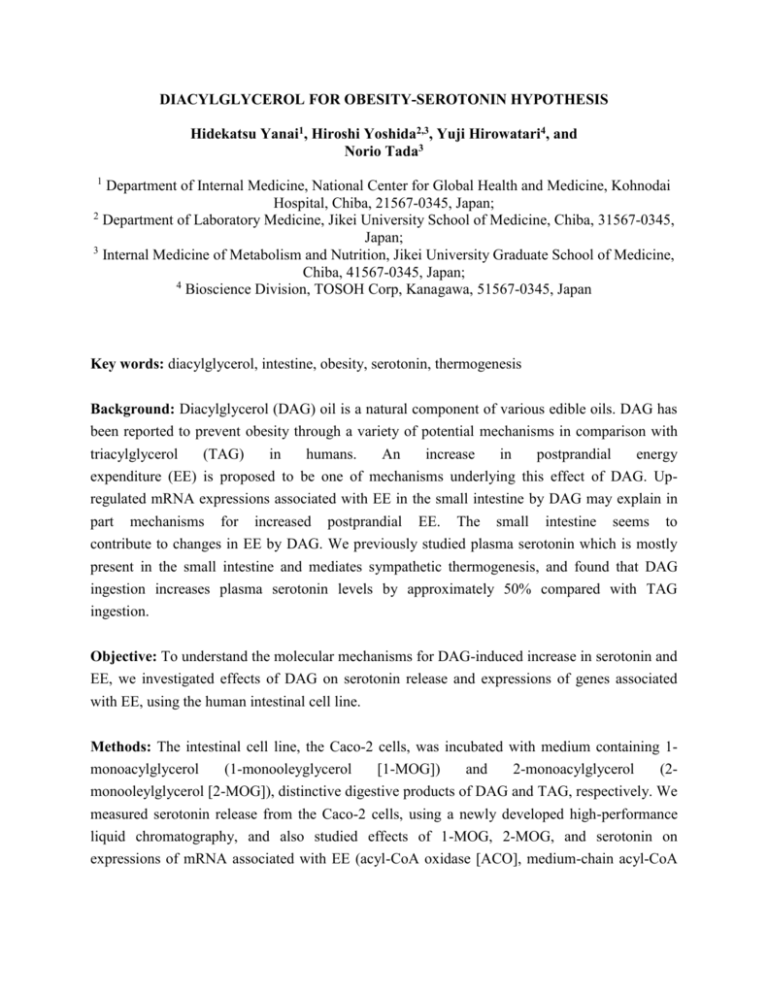
DIACYLGLYCEROL FOR OBESITY-SEROTONIN HYPOTHESIS Hidekatsu Yanai1, Hiroshi Yoshida2,3, Yuji Hirowatari4, and Norio Tada3 1 Department of Internal Medicine, National Center for Global Health and Medicine, Kohnodai Hospital, Chiba, 21567-0345, Japan; 2 Department of Laboratory Medicine, Jikei University School of Medicine, Chiba, 31567-0345, Japan; 3 Internal Medicine of Metabolism and Nutrition, Jikei University Graduate School of Medicine, Chiba, 41567-0345, Japan; 4 Bioscience Division, TOSOH Corp, Kanagawa, 51567-0345, Japan Key words: diacylglycerol, intestine, obesity, serotonin, thermogenesis Background: Diacylglycerol (DAG) oil is a natural component of various edible oils. DAG has been reported to prevent obesity through a variety of potential mechanisms in comparison with triacylglycerol (TAG) in humans. An increase in postprandial energy expenditure (EE) is proposed to be one of mechanisms underlying this effect of DAG. Upregulated mRNA expressions associated with EE in the small intestine by DAG may explain in part mechanisms for increased postprandial EE. The small intestine seems to contribute to changes in EE by DAG. We previously studied plasma serotonin which is mostly present in the small intestine and mediates sympathetic thermogenesis, and found that DAG ingestion increases plasma serotonin levels by approximately 50% compared with TAG ingestion. Objective: To understand the molecular mechanisms for DAG-induced increase in serotonin and EE, we investigated effects of DAG on serotonin release and expressions of genes associated with EE, using the human intestinal cell line. Methods: The intestinal cell line, the Caco-2 cells, was incubated with medium containing 1monoacylglycerol (1-monooleyglycerol [1-MOG]) and 2-monoacylglycerol (2monooleylglycerol [2-MOG]), distinctive digestive products of DAG and TAG, respectively. We measured serotonin release from the Caco-2 cells, using a newly developed high-performance liquid chromatography, and also studied effects of 1-MOG, 2-MOG, and serotonin on expressions of mRNA associated with EE (acyl-CoA oxidase [ACO], medium-chain acyl-CoA dehydrogenase [MCAD], fatty acid translocase [FAT], and uncoupling protein-2 [UCP-2]), by the Real-Time quantitative RT-PCR system. Results: 100 M 1-MOG significantly increased serotonin release from the Caco-2 cells compared with the same concentration of 2-MOG by approximately 37% (P < 0.001). Expressions of mRNA of ACO, FAT, and UCP-2 were significantly higher in 100 M 1-MOGtreated Caco-2 cells than 100 M 2-MOG-treaed cells, by approximately 13%, 24%, and 35%, respectively. Expressions of mRNA of ACO, MCAD, FAT, and UCP-2 were significantly increased in 400 nM serotonin-treated Caco-2 cells as compared with the Caco-2 cells incubated without serotonin by approximately 29%, 30%, and 39%, respectively. Conclusion: Our study demonstrated that a hydrolytic product of DAG increases serotonin release from the intestinal cells, and enhances expressions of genes associated with -oxidation (ACO, MCAD), thermogenesis (UCP-2) and fatty acids metabolism (FAT). Further, present study revealed that serotonin also enhances expression of these genes, proposing a new molecular biological mechanism for DAG-mediated anti-obesity effect. Serotonin may play an important role in DAG-mediated prevention of obesity. 9th International Conference, San Diego, 16-18, 2011 Corresponding Author: Hidekatsu Yanai, PhD, professor, Department of Internal Medicine, National Center for Global Health and Medicine, Kohnodai Hospital, Chiba, 01567-0345, Japan E-mail: hata@gmal.com, Phone number: (001) 469-441-8272 Main presenting author: Hidekatsu Yanai, PhD, professor, E: mail: hata@gmal.com, Phone number: (001) 469-441-8272 Presentation type: oral or poster Session: Functional Foods and Diabetes Co-authors: Hiroshi Yoshida, MD, PhD, E-mail: kata@gmal.com Yuji Hirowatari, PhD, E-mail: bata@gmal.com Norio Tada, MS, E-mail: sata@gmal.com

